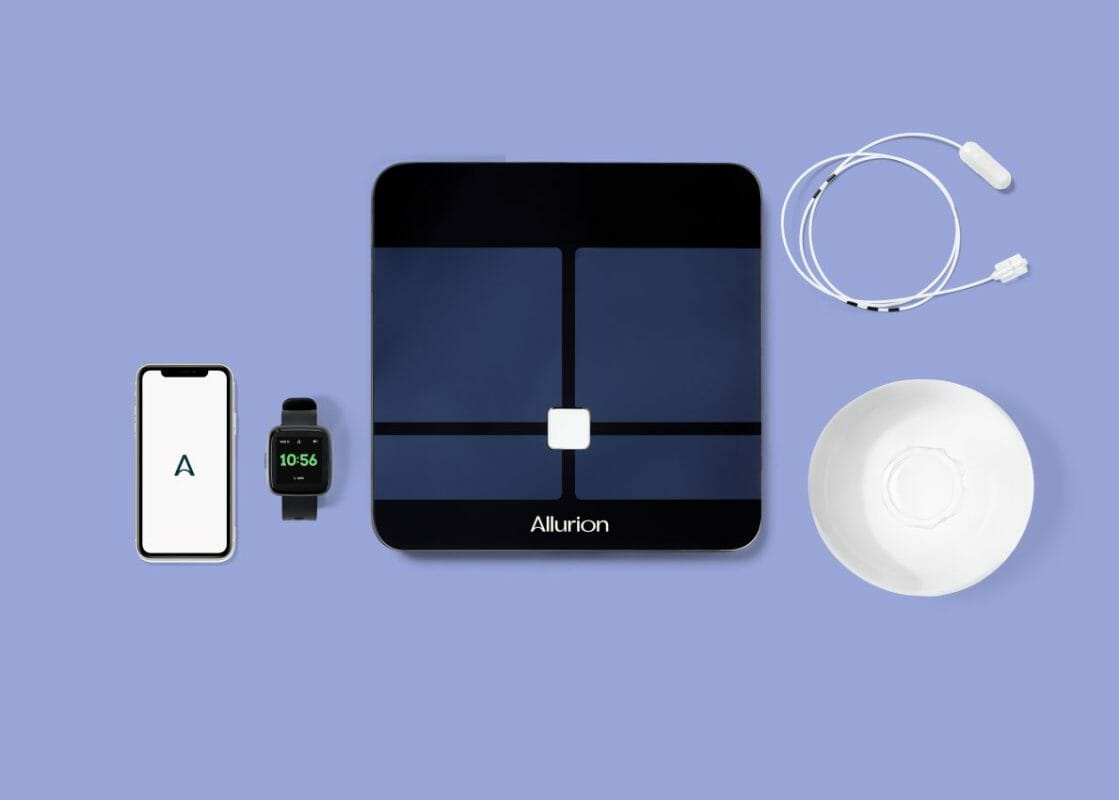Allurion, a company dedicated to ending obesity, today announced results from a new study that will be presented at the European Congress on Obesity exploring the use of a GLP-1 weight-loss medication with the Allurion Gastric Balloon Program to enhance patient outcomes.
The retrospective study was conducted across 3 obesity centers in Italy, Spain and Egypt. In total, 181 patients with BMIs of 27 and above were enrolled in the Allurion Program with Saxenda® (liraglutide) added once daily starting 4 to 16 weeks after balloon placement. On average, the duration of drug treatment was just over 4 months (4.1 ± 2.2 months).
All patients were followed for at least 6 months by a multidisciplinary team using digital monitoring tools, including the Allurion Connected Scale and app. The digital tools allowed virtual consultations and personalized support in between clinic visits.
Results showed that patients in the study reached an average total body weight loss of almost 19% (18.7% ± 12%, p< 0.0001) after approximately 8 months (average of 7.8 ± 2.1 months, with a range of 5-10 months). The study concluded that combination therapy was safe and effective and could further enhance weight-loss outcomes and durability.
“Combination therapy gives providers flexibility in managing obesity in patients who need additional weight loss or increased durability”, says Dr. Roberta Ienca, lead author of the study. “The ease of use, low rate of adverse events, and low cost of the Allurion Program make it an ideal primary weight loss therapy that can be complemented by medications or other treatments.”
There were no serious adverse events. Other balloon related adverse events including nausea, vomiting and abdominal cramps were managed with medication. In addition, four participants had the balloon removed due to intolerance, gastric dilation, or early balloon deflation.
Liraglutide related adverse events included nausea (16.5%), diarrhoea (3.3%), constipation (2.2%) and headache (1.7%). Overall, four participants discontinued drug therapy because of tachycardia/chest pain or gastrointestinal symptoms.
“The Allurion Program consists of a therapeutic device, remote patient monitoring platform, and behavior change program and is designed to deliver long-term outcomes,” says Dr. Shantanu Gaur, Founder and CEO of Allurion. “It is uniquely positioned as a platform for other therapies—like GLP-1 medications—to bolt on as a complementary treatment.”
“We have always taken innovative approaches to providing the best long-term care for our patients. Combination therapy is becoming increasingly popular, and we are looking forward to pioneering new, evidence-based approaches that drive better, longer-lasting outcomes for patients,” says Benoit Chardon, Chief Commercial Officer of Allurion. “We see significant growth potential in incorporating other weight-loss treatments on the Allurion platform.”
About the study
Oral Presentation Reference No: 0620 at the 30th European Congress on Obesity (ECO 2023) taking place May 17-20, 2023 in Dublin, Ireland.
Ienca, R.; Ayuso, L.; Shahin, M. Swallowable intragastric balloon program and GLP1 agonist combined treatment for obesity: an international multicenter study.

